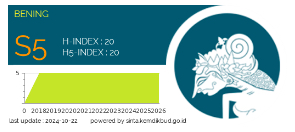ANALYSIS OF FINANCIAL RATIOS TO FINANCIAL PERFORMANCE (STUDY IN CEMENT COMPANIES GO PUBLIC FROM 2004 TO 2012 PERIODS
Abstract
Financial ratios is an activity that compares data and figures contained in financial reports of the company, by using the metdhon of comparing one number to another number. In this research, financial ratios are used as test the effect on the financial performance (Return on Assets) is the solvency ratio (Debt to Equity Ratio), the ratio of profitability (net profit margin) and activity ratio (Total Assets Turn Over) on cement companies that go public the period 2004 to 2012. The cement companies that go public or are listed on the Stock Exchange (Indonesia Stock Exchange), namely, PT. Semen Indonesia Tbk. (SMGR), PT. Indocement. (INTP) and PT. Holcim Indonesia Tbk. (SMCB).
This research uses the same sample with the population or sample is saturated, at three cement companies that go public, from 2004 to 2012. By using secondary data from publications ICMD (Indonesia Capital Marceting Dictionary), this type of research is descriptive quantitative. The analysis technique used is the classical assumption, multiple regression analysis and hypothesis testing is the t test (partial) and F test (simultaneous).
In the classical assumption test results are used (normality and heteroscedasticity test) showed that there were no irregularities classical assumptions, it is shown that the available data has been qualified to use multiple linear regression model. From this study it is concluded as follows: variable debt to equity ratio (DER) and no significant negative effect on ROA, the variable net profit margin (NPM) and a significant positive effect on ROA and variable total assets turnover (TATO) and a significant positive effect on ROA. Multiple regression equation obtained is ROA = -0,067 + 0,002 (DER) + 0,533 (NPM) + 0,149 (TATO). The coefficient of determination (adjusted R2) is at 93.1%, which means 93.1% ROA is affected by the independent variable, while the remaining 6,9% is explained by other variables that are not included in this research model.
Full Text:
PDFDOI: https://doi.org/10.33373/bening.v2i2.798
Refbacks
- There are currently no refbacks.
ISSN Barcode:

Ciptaan disebarluaskan di bawah Lisensi Creative Commons Atribusi 4.0 Internasional.
 Jurnal Bening
Jurnal Bening













